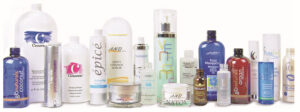by Brittany Willes, writer, Plastics Decorating
Through the pandemic many businesses have been hit hard; however, from in-store to online packaging is thriving. According to a study by Research and Markets, “The global packaging market size during the COVID-19 pandemic is projected to grow from USD 909.2 billion in 2019 to USD 1,012.6 billion by 2021, at a Compound Annual Growth Rate (CAGR) of 5.5% as the most likely outcome during the forecast period, with the best-case scenario reflecting 9.2% growth.”1
With this growth in packaging, the pandemic also has spurred a new emphasis on sustainability. As concerns about climate change, recyclable and environmentally friendly products have risen, brand owners and consumers have begun to look at every aspect of how a package is designed and manufactured.
Although news stories and negative publicity exist, plastics play an important part in creating safe and reliable packaging for many goods. In fact, “plastic is projected to lead the packaging market during the forecast period. Plastic is described to be very necessary, and several measures are being taken to either temporarily roll back single-use plastic bag bans or stop the implementation of state-wide ban laws. Since the demand from many end-use industries is growing, the use of plastic packaging also will see a significant rise during this crisis.”1
“The conversation around plastics packaging is complex,” said Linda Casey, editor-in-chief of Brand Experience: Packaging (BXP) magazine, which celebrates package design and helps CPGs deliver brand experiences that attract new customers and cement brand loyalty.
“There’s no doubt that there is a plastic waste problem worldwide that needs to continue to be addressed and requires further innovative thinking,” Casey continued. “But, there still are some use cases where plastic is the better choice. Let’s look at healthcare, where it is of the utmost importance to have extremely protective, hard-to-break packaging that helps ensure the sterility of its contents. At this time, plastic is the right choice for this use case. We also see that for some packaging formats, such as bottles, plastics remain a critical part of the lightweight package’s compensation.”
Specialty areas, such as packaging for cosmetics, also are seeing growth. Despite having the most varied packaging requirements when compared to other sectors, packaging for the cosmetics industry has grown by leaps and bounds in recent years. As noted by Mordor Intelligence, “The cosmetic packaging market is expected to grow at a CAGR of 3.7% over the forecast period (2021-2026).”2
Emphasis on sustainability
While the pandemic certainly has had an impact on how consumers view plastics in the short term, there can be no doubt that there will be a continued push for manufacturers to shift their focus to more sustainable packaging efforts. Luckily, many manufacturers and decorators already have been doing just that.
“At Schwerdtle, we’re well known for our hot stamp decorating used on all types of cosmetic containers, and we have seen an evolution coming in the direction of all plastic packaging,” remarked Bill Morey, manager of hot stamp die and tooling. “The circular need for sustainability requires the understanding and matching of all materials involved in the finished product to be realistically recyclable or reusable. Foil stamping compatibility is one of many components that must be considered.”
Reimagining foils and inks is not the only way in which manufacturers and decorators are working to combat unnecessary waste when it comes to packaging. When reducing the amount of packaging overall for a given product, plastics once again has a lot to offer. “As manufacturers seek options to reduce the amount of material used per product, plastics deliver exceptional gains in terms of the provision of lightweight packaging solutions that use fewer materials.”2
This is confirmed by Morey, who has indirectly seen the use of lightweighting begin to take hold in cosmetics packaging. “I have heard of end-use customers requiring all plastic containers to be made with fewer and thinner walls, virgin materials and incorporating even more recycled material,” he stated. “All materials are to be equally compatible with current recycling processes.” While the process may not yet be commonplace, there can be little doubt it will become more popular in the future.
Bill Berg, president of Blue Line Labels, offers all types of decorating processes and works with cosmetic company and other brand owners to help them create everything from the container for the product to the outside carton and label. He has witnessed many changes in the last few months from both new and existing customers.
“We have seen several of our customers move toward squeeze tubes vs. more standard plastic containers,” Berg said. Plastic squeeze tubes are lightweight and very durable. From a decorating standpoint, when a tube is squeezed and released, it returns back to its original shape without distorting the printing on the tube. He continued, “The decoration of squeeze tubes, either through offset or screen printing, is done directly on the tube and eliminates the need for any type of applied label. This saves costs and can be looked at as a more sustainable product overall.”
Another trend in cosmetic packaging has been to a more “all natural” or “clean” look for products such as hair, face and body products which are increasingly being scrutinized by industry governing groups for the veracity of the product claims. Morey affirmed, “By design, it seems the trend for decorating of these packages is to use more subdued natural tones, which lend themselves to be applied using sustainable materials and inks.”
As with lightweighting, the trend toward refillable packaging has started to appear in cosmetics packaging as well, according to Morey. “There are cosmetics packaging designs that incorporate insertable liners that hold the product until empty, and then new product liner pods are purchased that fit into the original jar or compact container, eliminating the need for an entirely new container,” he said.
Advances in technology

Greater emphasis on sustainability is not the only trend to hit the cosmetics packaging industry in recent years. As many industries are experiencing, there has been a shift toward smaller quantities and faster production times when it comes to meeting customer demands.
As Morey noted, “package molding manufacturers with capabilities for injection, blow molding or thermoforming have been asked to ‘turn on a dime’ to accommodate the needs of their current customers, as well as new customer requests.” This trend already was well underway prior to COVID-19 and has only become more prevalent during the pandemic and its aftermath. As brands focus on creating more customized and interactive packaging designed to grab consumers’ attention at the point or purchase, the ability to “turn on a dime” will continue to be paramount for manufacturers and decorators.
Luckily, cosmetics and other packaging sectors have experienced a boom in technological advances. In just the last few years, the decoration process has benefited from several developments. “Without a doubt, the advancement of the digital and laser printing processes offers the benefits of speed and quality, along with the options of consecutive changes in the marking information,” said Morey. “This may be done directly on the part itself with either process.” Faster speeds and improved quality from equipment technology upgrades allow decorators to keep up with ever-changing customer demands – and also impact sustainability by reducing waste and allowing smaller run quantities.
“We have continued to grow the digital decorating portion of our business,” stated Berg. “It has helped us stay competitive for shorter runs. It also has allowed smaller start-ups for cosmetic and other consumer products to utilize a more decorative container at a lower overall cost.” Digital inkjet printing on cylindrical tubes or containers also eliminates the need for a label, creating a cost savings and one less step in the process.
Here to stay
No matter what other trends may develop in the future, there can be no doubt that an emphasis on sustainable and environmentally friendly packaging is here to stay. Luckily, plastics manufacturers, decorators and major brands are making great efforts to heed their customers’ concerns by developing innovative packaging strategies and advancing decoration formulations.
References
- “COVID-19 Impact on Packaging Market by Material Type (Plastics/Polymers, Paper & Paperboard, Glass and Metal), Application (Healthcare, Food & Beverages, Household Hygiene, Beauty & Personal Care and Electrical & Electronics) and Region – Global Forecast to 2021.” www.researchandmarkets.com/reports/5024117/covid-19-impact-on-packaging-market-by-material
- “COSMETIC PACKAGING MARKET – GROWTH, TRENDS, COVID-19 IMPACT, AND FORECASTS (2021 – 2026).” www.mordorintelligence.com.





